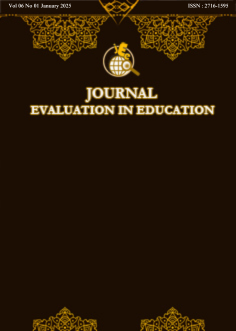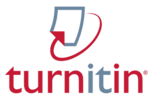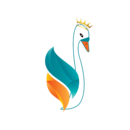Introducing Math Concepts At An Early Age: Collaborative Stimulation
Abstract
Purpose of the study: Early childhood education is considered very strategic in human development. This is because early childhood education provides a foothold in further education. Including in mathematics education which is needed from an early age. This article aims to describe the benefits of local wisdom around children's environment in introducing math concepts through collaboration during a pandemic.
Methodology: This research uses a child collaborative approach through descriptive analysis in two institutions with data collection methods of interviews, questionnaires, and observations.
Main Findings: The results showed that the role of communication is very important between children, parents, and teachers in collaborating to stimulate the formation of mathematics through local wisdom.
Novelty/Originality of this study: This research recommends that introducing math is done with real activities, encouraging children to stimulate the habit of collaboration in improving children's life skills.
References
K. Vikram, and N. Chindarkar, “Bridging the gaps in cognitive achievement in India: The crucial role of the integrated child development services in early childhood”. World Development, vol. 127, no. 104697, 2020, doi: 10.1016/j.worlddev.2019.104697.
P. B. Medan, “Pengelolaan murid unggul berbasis manajemen kelas pendidikan anak usia dini (PAUD) [Management of superior students based on early childhood education (PAUD) class management],” Almufida: Jurnal Ilmu-Ilmu Keislaman, Vol. 3, no. 1, pp. 70–94, 2018.
E. C. Litkowski, R. J. Duncan, J. A. Logan, and D. J. Purpura, “When do preschoolers learn specific mathematics skills? Map¬ping the development of early numeracy knowledge,” Journal of Experimental Child Psychology, vol. 195, 104846, 2020b. https://doi. org/10.1016/j.jecp.2020.104846.
J. McFarland, B. Hussar, J. Zhang, X. Wang, K. Wang, S. Hein, M. Diliberti, E. Forrest Cataldi, F. Bullock Mann, and A. Barmer, The Condition of Education 2019 (9National Center for Education Statistics. Retrieved vol.). Washington, DC: U.S. Department of Education. NCES 2019.
N. C. Jordan, B. L. Devlin, and M. Botello, “Core foundations of early mathematics: Refining the number sense framework,” Current Opinion in Behavioral Sciences, vol. 46, pp. 101181, 2022, doi: 10.1016/j.cobeha.2022.101181.
D. C. Geary, K. vanMarle, F. W. Chu, J. Rouder, M. K. Hoard, and L. Nugent, “Early conceptual understanding of car-dinality predicts superior school-entry number-system knowl¬edge,” Psychological Science, vol. 29, no. 2, pp. 191–205, 2018, doi: 10.1177/0956797617729817.
A. H. Friedman-Krauss, W. S. Barnett, K. S. Hodges, K. A. Garver, G. G. Weisenfeld, B. A. Gardiner, and T. M. Jost, The state of Preschool 2022: State Preschool Yearbook (5Retrieved vol.). National Institute for Early Education Research.
N. S. Sukmadinata, Metode Penelitian Pendidikan [Educational Research Methods], PT Remaja Rosdakarya, 2012.
S. Hadi, and Novaliyosi, “TIMSS Indonesia (Trends in International Mathematics and Science Study)”. Prosiding Seminar Nasional & Call For Papers Program Studi Magister Pendidikan Matematika Universitas Siliwangi, pp. 562–569, 2019.
I. Syahril, Transformasi Guru dan Pemimpin Sekolah [Transformation of Teachers and School Leaders]. In Kompas (p. 23 mei), 2019.
E. Auld, and P. Morris, “The OECD and IELS: Redefining early childhood education for the 21st century,” Policy Futures in Education, vol. 17, no. 1, pp. 11–26, 2019. doi:10.1177/1478210318823949.
K. Ananiadou, and M. Claro, “21st century skills and competences for new millennium learners in OECD countries,” OECD Education Working Papers, vol. 41, no. 33, 2009. doi:10.1787/218525261154.
J. A. Koenig, “21 St Century Skills Summary of a Workshop,” In Social Sciences, 2011.
Y. Colliver, and N. Veraksa, “The aim of the game: A pedagogical tool to support young children’s learning through play,” Learning, Culture and Social Interaction, vol. 21, no. 3, pp. 296–310, 2019, doi: 10.1016/j.lcsi.2019.03.001.
A. Devi, M. Fleer, and L. Li, “Preschool teachers’ pedagogical positioning in relation to children’s imaginative play,” Early Child Development and Care, vol. 1, no. 1, pp. 1–13, 2020, doi: 10.1080/03004430.2020.1717479.
S. Sugiono, and K. Kuntjojo, “Pengembangan model permainan pra-calistung anak usia dini [Development of a pre-reading, writing and arithmetic game model for early childhood],” JPUD - Jurnal Pendidikan Usia Dini, vol. 10, no. 2, pp. 255–276, 2016. doi:10.21009/jpud.102.04
N. Afifah, “Strategi pembelajaran tutor sebaya untuk meningkatkan hasil belajar matematika anak berkesulitan belajar kelas IIIA SD Negeri Kepatihan Surakarta Tahun Pelajaran 2010/2011 [Peer tutoring learning strategies to improve mathematics learning outcomes of students with learning difficulties in grade IIIA of Kepatihan Elementary School, Surakarta, 2010/2011 Academic Year],” Zjurnal UNS, vol. 1, pp. 98, 2011.
W. M. D. Syaiputra, L. Janah, and S. Mardiyah, “Modified bottle cap for improving children’s arithmetic ability,” JPUD - Jurnal Pendidikan Usia Dini, vol. 13, no. 2, pp. 249–263, 2019. doi:10.21009/jpud.132.04.
G. Wulansuci, and E. Kurniati, “Pembelajaran calistung (Membaca, Menulis, Berhitung) dengan resiko terjadinya stress akademik pada anak usia dini [Learning to read, write, and count (reading, writing, and arithmetic) with the risk of academic stress in early childhood],” Jurnal Tunas Siliwangi, vol. 5, no. 1, 2019.
P. Erdo, and C. Pomerance, “The mathematics of opportunity: Rethinking the role of math in educational equity,” (Issue March 2001). doi.org/10.1146/annurev.anthro.35.081705.123127.
A. Klein, P. Starkey, and L. DeFlorio, “Improving the mathematical knowledge of at-risk preschool children: Two approaches to intensifying early math intervention alice,” In Cognitive Foundations for Improving Mathematical Learning 1st ed, Vol. 5, 2019, doi:10.1016/b978-0-12-815952-1.00009-8.
C. Galindo, SSonnenschein, and A. Montoya-Ávila, “Latina mothers’ engagement in children’s math learning in the early school years: Conceptions of math and socialization practices,” Early Childhood Research Quarterly, vol. 47, pp. 271–283, 2019, doi: 10.1016/j.ecresq.2018.11.007.
J. Pamungkas, A. Syamsudin, H. Harun, and S. Sudaryanti, “Survei pembelajaran kearifan lokal di taman kanak-kanak se-provinsi daerah istimewa yogyakarta [Survey of local wisdom learning in kindergartens throughout the Special Region of Yogyakarta Province],” Al-Athfal : Jurnal Pendidikan Anak, vol. 5, no. 1, pp. 1–20, 2019. doi:10.14421/al-athfal.2019.51-01.
E. M. Anderson, “Preparing the next generation of early childhood teachers: The emerging role of interprofessional education and collaboration in teacher education,” Journal of Early Childhood Teacher Education, vol. 34, no.1, pp. 23–35, 2013. doi: 10.1080/10901027.2013.758535.
L. J. Moleong, Metodologi Penelitian Kualitatif Edisi Revisi [Qualitative Research Methodology Revised Edition], 2014.
B. M. Suryonegoro, M. L. Wuryastuti, and N. R. Dewi, “Literature Review: Inquiry Social Complexity-STEAM model based on math trail-virtual reality activity nuanced with javanese culture in improving critical thinking ability,” Jor. Eva. Edu, vol. 5, no. 2, pp. 89-99, Apr. 2024.
D. Prambanan, Dila Yathasya, and P. S. A. Anwar, “Analysis of Cognitive Learning Outcomes of Compliance Personality Students in Solving Mathematical Problems,” Jor. Eva. Edu, vol. 4, no. 1, pp. 31-35, 2023.
E. Romiyati, A. Ardi Rahman, and E. Budiyono, “Development of Mathematical Student Worksheets Based on Scientific Approaches and PQ4R Learning Strategies on Associated Materials,” Jor. Eva. Edu, vol. 4, no. 1, pp. 17-20, 2023.
I. Schwank, and E. Schwank, “Mathematical concepts during early childhood across cultures, development of. in international encyclopedia of the social & behavioral sciences: Second edition (Second Edi, Vol. 14),” Elsevier, 2015. doi:10.1016/B978-0-08-097086-8.23068-7.
J. Kaskens, E. Segers, S. L. Goei, J. E. H. van Luit, and L. Verhoeven, “Impact of Children’s math self-concept, math self-efficacy, math anxiety, and teacher competencies on math development,” Teaching and Teacher Education, vol. 94, pp. 103096, 2020, doi: 10.1016/j.tate.2020.103096.
B. Brezovszky, J. McMullen, K. Veermans, M. M. Hannula-Sormunen, G. Rodríguez-Aflecht, N. Pongsakdi, N. Laakkonen, and E. Lehtinen, “Effects of a mathematics game-based learning environment on primary school students’ adaptive number knowledge boglárka,” Computers & Education, vol. 8, no. 5, pp. 63–74, 2019.
J. McMullen, B. Brezovszky, M. M. Hannula-Sormunen, K. Veermans, G. Rodríguez-Aflecht, N. Pongsakdi, and E. Lehtinen, “Adaptive number knowledge and its relation to arithmetic and pre-algebra knowledge,” Learning and Instruction, vol. 49, pp. 178–187, 2017, doi: 10.1016/j.learninstruc.2017.02.001.
M. Brizuela, B. Stephen, K. Isler, G. Stroud, and F. Fonger, “Teaching and learning algebraic thinking with 5-to 12-year-olds: the global evolution of and emerging field of research and practice,” Research in Mathematics Education, vol. 23, no.2, pp. 226–230, 2021. doi:10.1080/14794802.2020.1725613.
K. Missall, R. L. Hojnoski, G. I. L. Caskie, and P. Repasky, “Home numeracy environments of preschoolers: examining relations among mathematical activities, parent mathematical beliefs, and early mathematical skills,” Early Education and Development, 2015. doi:10.1080/10409289.2015.968243.
A. Amalina, “Pembelajaran matematika anak usia dini di masa pandemi COVID-19 tahun 2020 [Early childhood mathematics learning during the COVID-19 pandemic in 2020],” Jurnal Obsesi : Jurnal Pendidikan Anak Usia Dini, vol. 5, no.1, pp. 538, 2020, doi:10.31004/obsesi.v5i1.592.
A. Nugraha, and F. A. Rahman, “Strategi kolaborasi orangtua dengan konselor dalam mengembangkan sukses studi siswa,” Jurnal Konseling GUSJIGANG, vol. 3, no. 1, pp. 128–136, 2017.
R. Hariawan, N. Ulfatin, and I. Arifin, “Contributions management of parenting and education program to strengthen the service three early childhood,” Education Center, vol. 12, no. 2, pp. 100–108, 2019, doi: 10.5539/ies.v12n2p100.
K. Ofstedal, and K. Dahlberg, “Collaboration in student teaching: Introducing the collaboration self-assessment tool,” Journal of Early Childhood Teacher Education, vol. 30, no. 1, pp. 37-48, 2009, doi: 10.1080/10901020802668043.
D. Mota, C. Vaz De Carvalho, and L. P. Reis, “A conceptual model for collaborative learning activities design,” 2011 IEEE Global Engineering Education Conference, EDUCON 2011, May, pp. 1026–1031, 2011, doi: 10.1109/EDUCON.2011.5773274.
L. M. Fawcett, and A. F. Garton, “The effect of peer collaboration on children’s problem-solving ability,” British Journal of Educational Psychology, vol. 75, no. 2, pp. 157–169, 2005. doi:10.1348/000709904X23411.
Copyright (c) 2025 Feri Faila Sufa, Budi Setiawan

This work is licensed under a Creative Commons Attribution 4.0 International License.
Authors who publish with this journal agree to the following terms:
- Authors retain copyright and acknowledge that the Integrated Science Education Journal is the first publisher licensed under a Creative Commons Attribution 4.0 International License.
- Authors are able to enter into separate, additional contractual arrangements for the non-exclusive distribution of the journal's published version of the work (e.g., post it to an institutional repository or publish it in a book), with an acknowledgment of its initial publication in this journal.
- Authors are permitted and encouraged to post their work online (e.g., in institutional repositories or on their website) prior to and during the submission process, as it can lead to productive exchanges and earlier and greater citation of published work.









.png)
.png)





